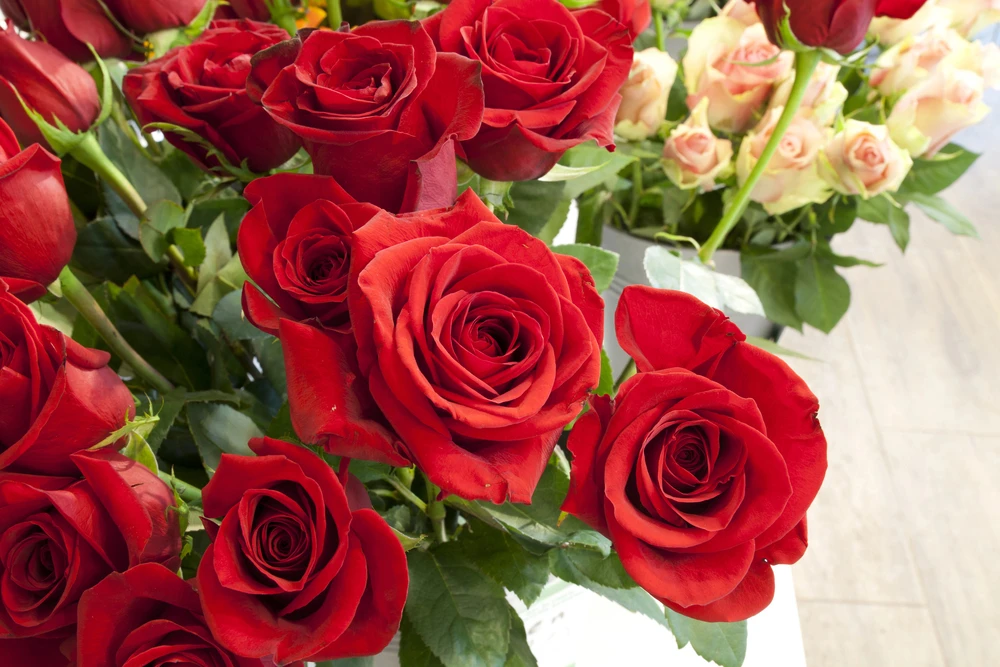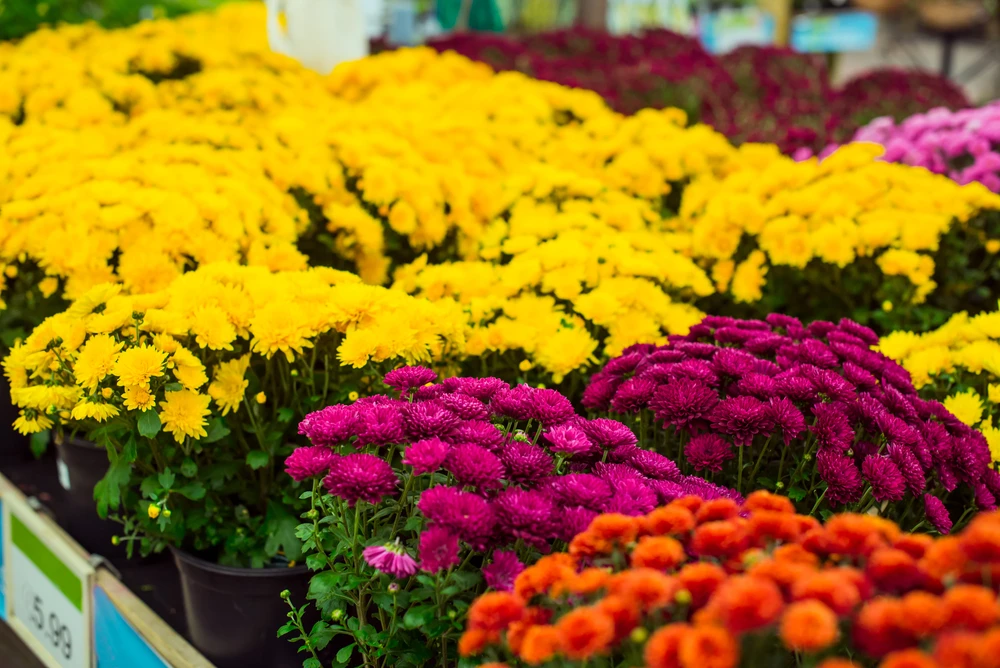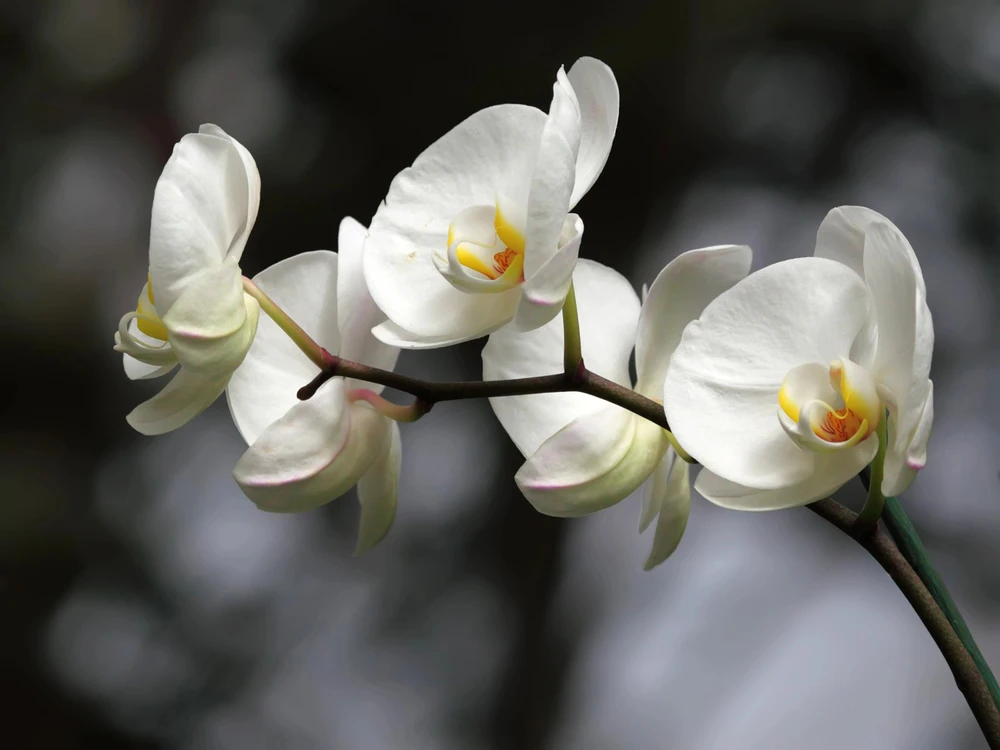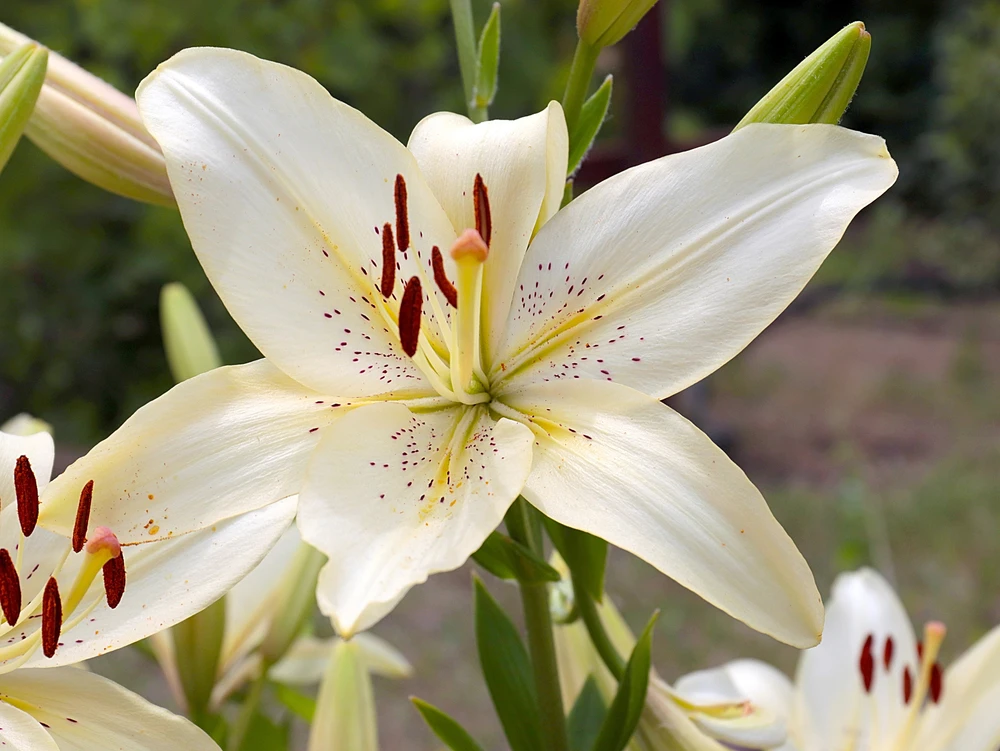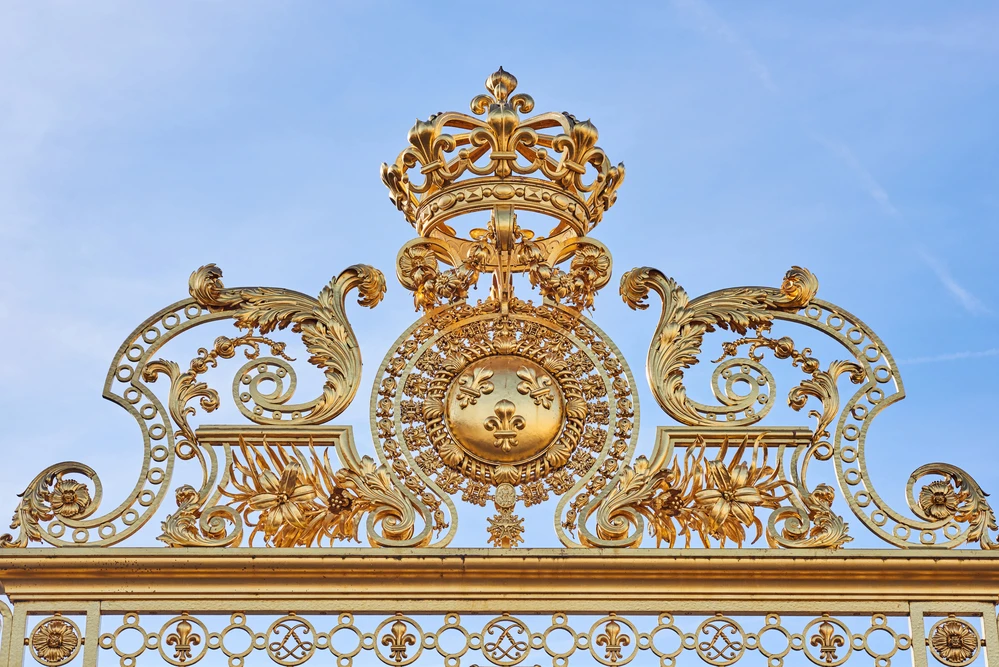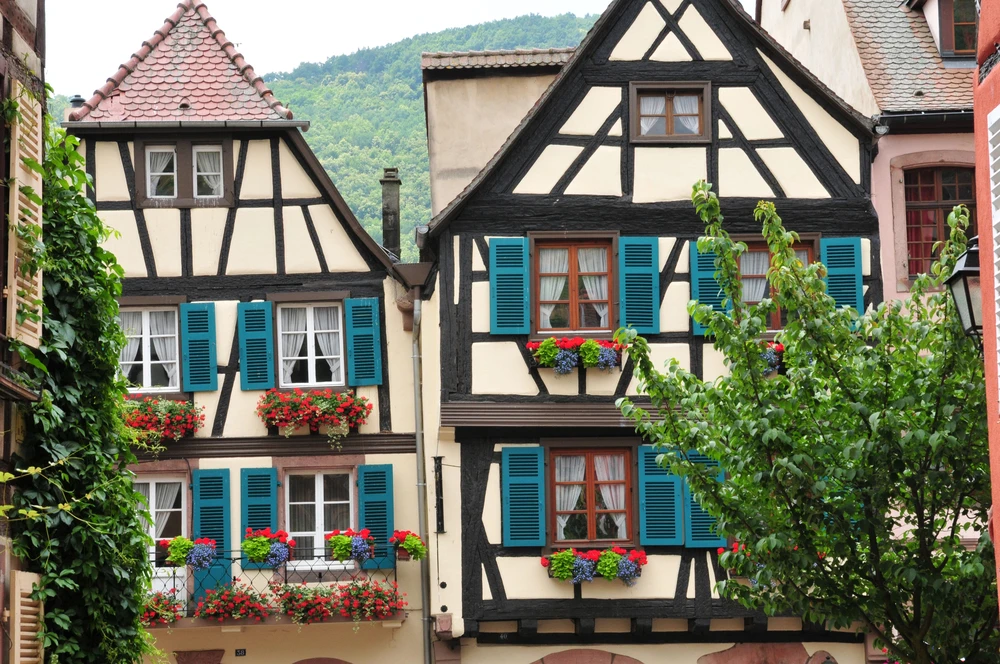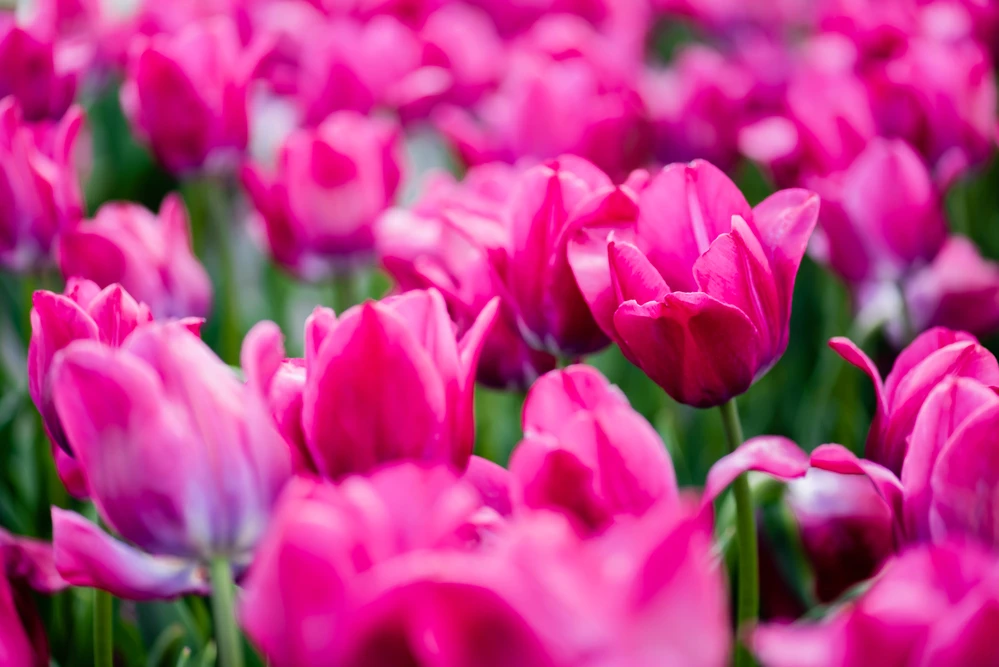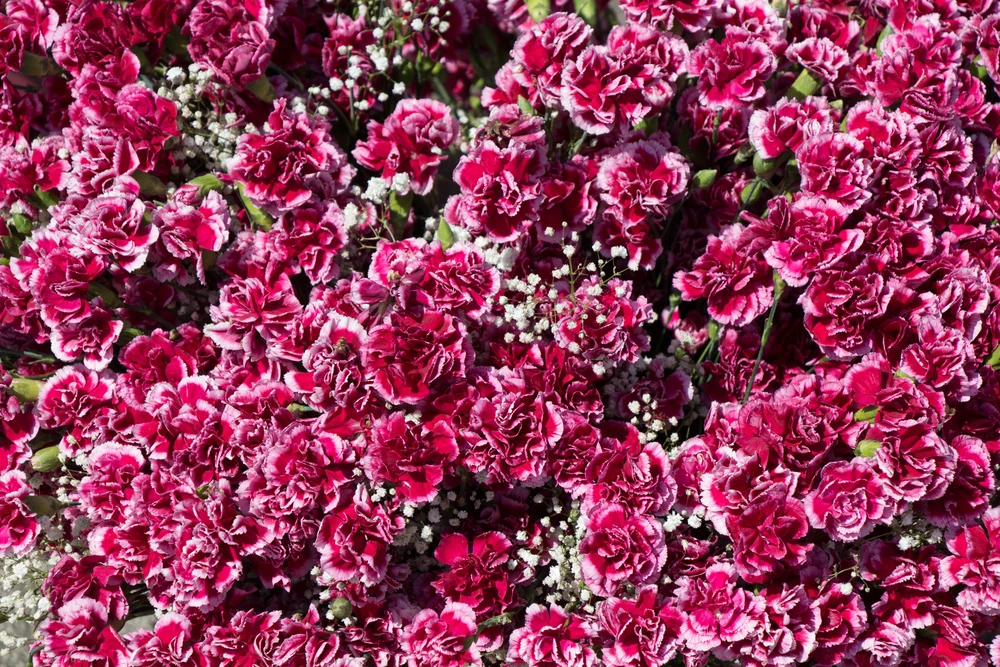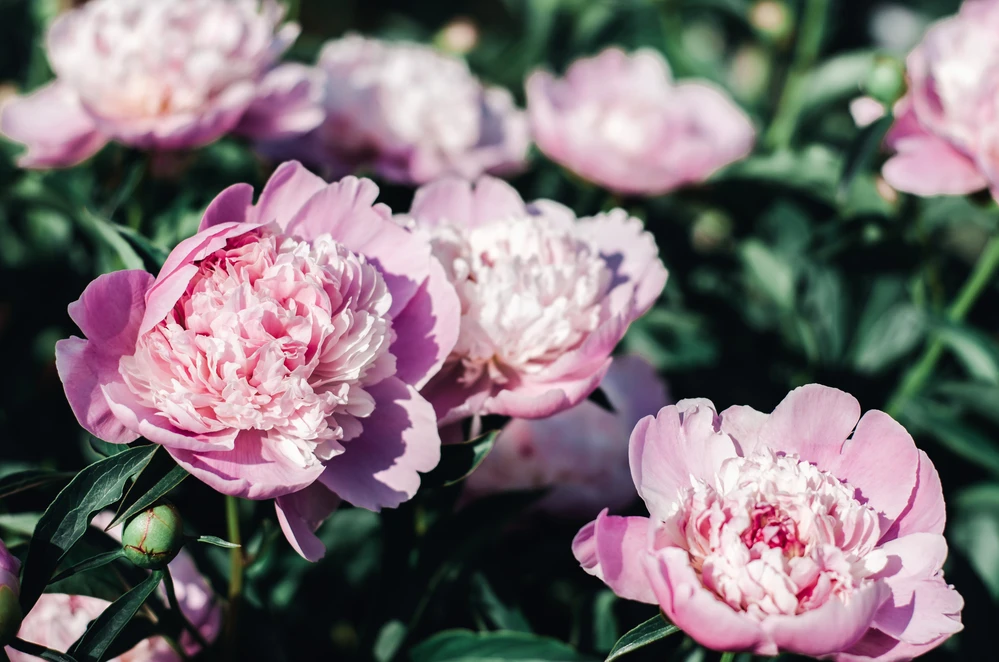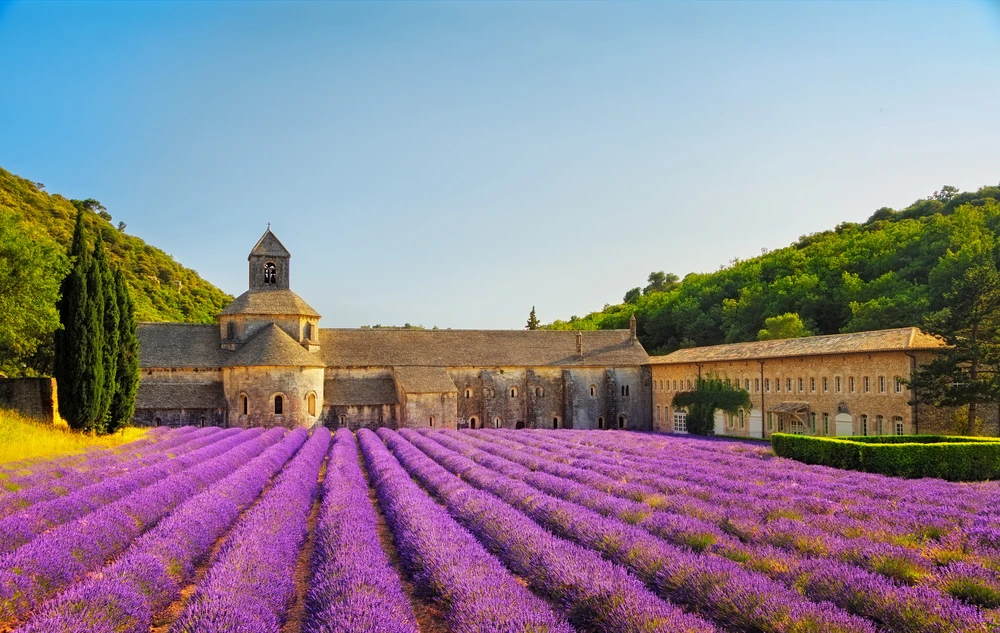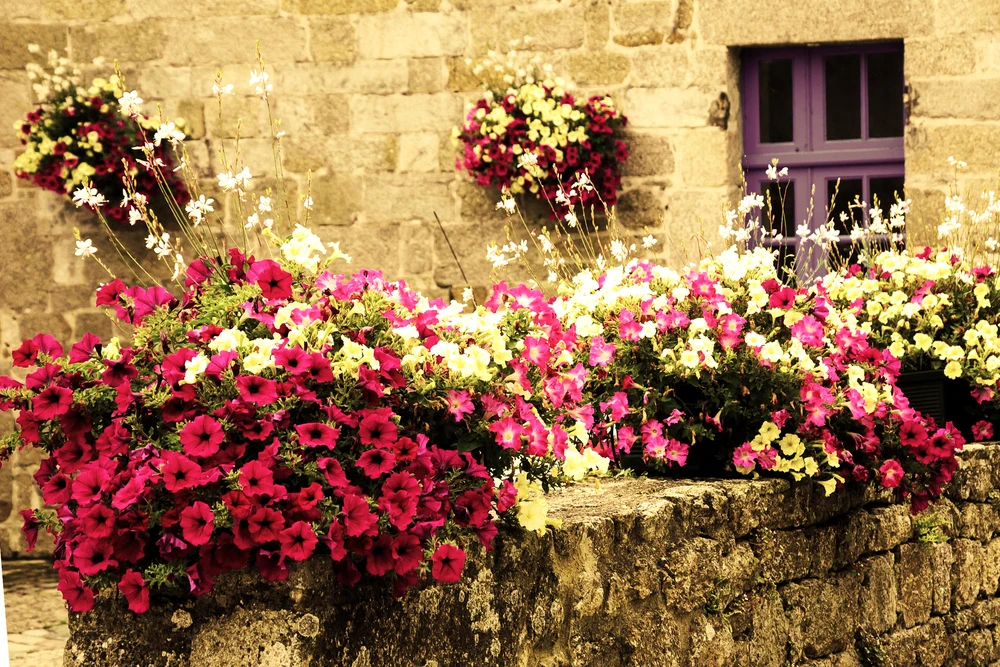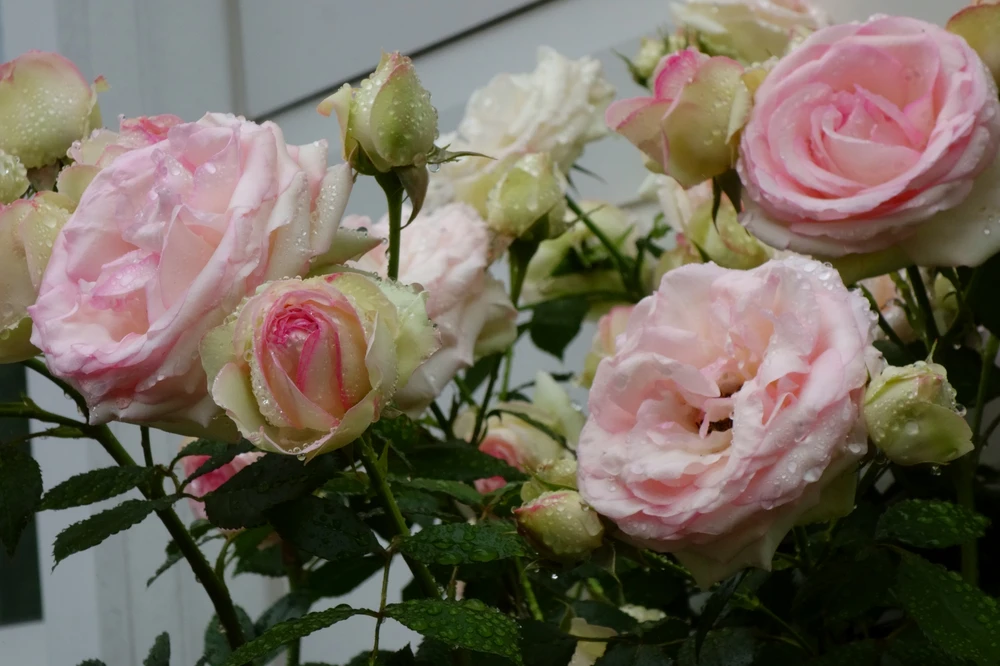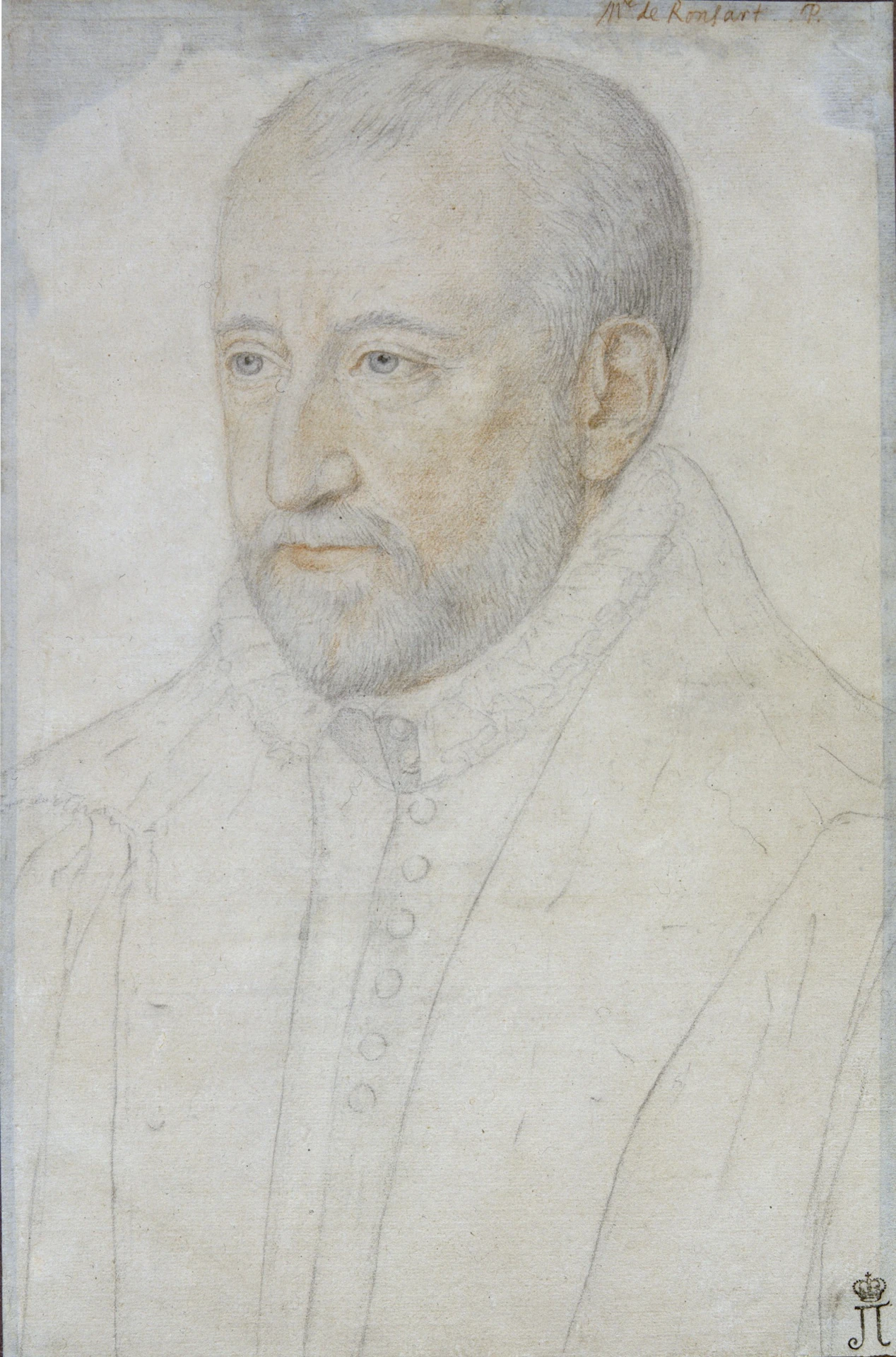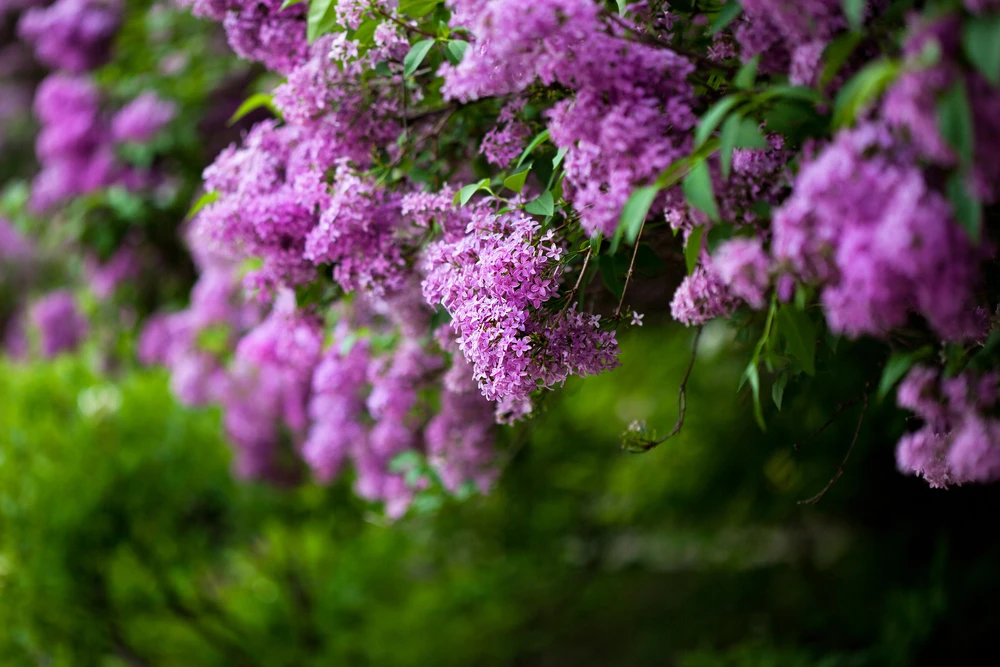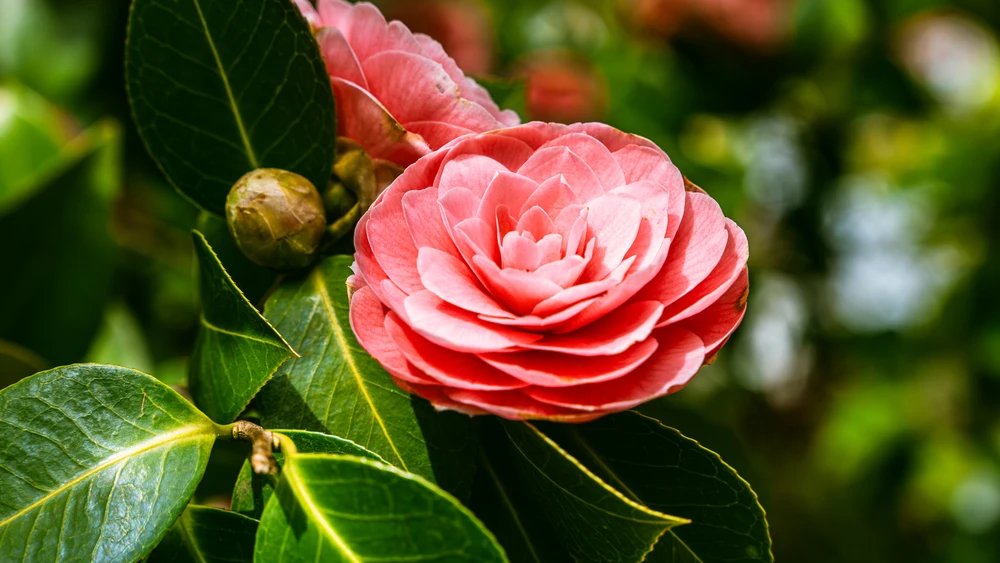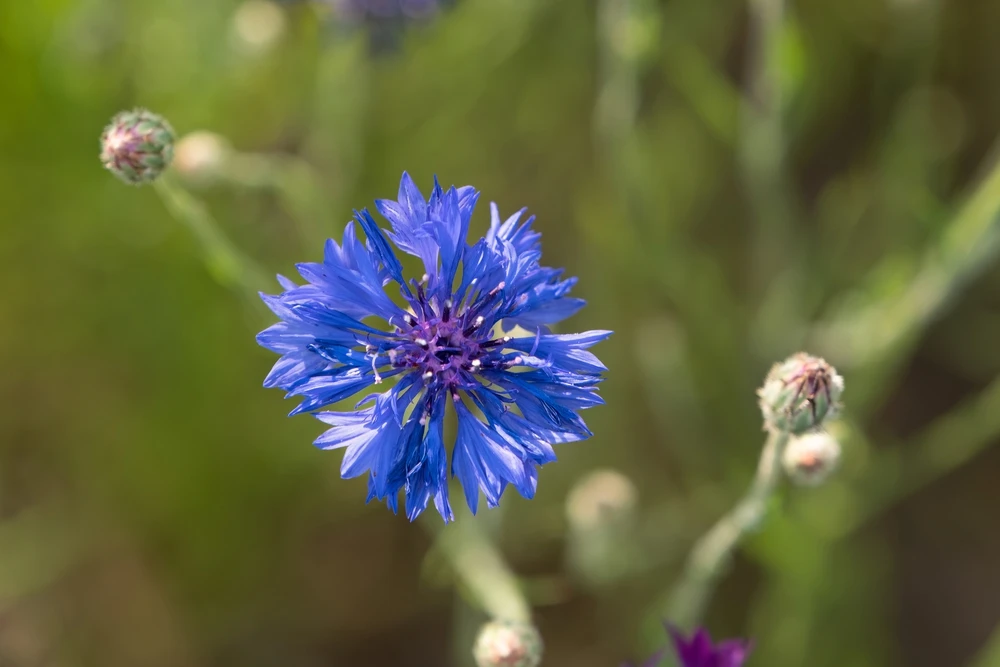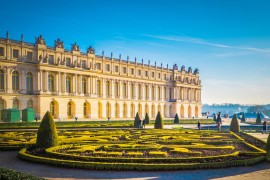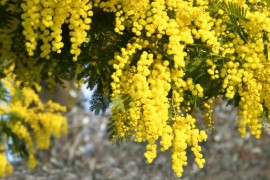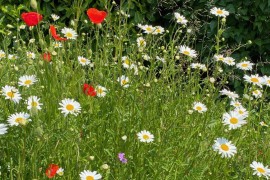The survey, carried out in 2020 by Kantar for Val'hor and FranceAgriMer among 7,000 French households aged 18 and over, reveals the top 15 flowers and plants sold in France. They are, in order: roses, chrysanthemums, Nordman firs (the French people's favourite Christmas tree), orchids, lilies, geraniums, roses, tomatoes, gerberas, hyacinths, cyclamen, tulips, dipladenia, peonies and carnations . I've selected 10 from the list, so here are 10 flowers that the French buy most often.
1 The rose
The red rose is France's favourite flower. Photo chosen by Monsieur de France: DJSrki via depositphotos.
The best-selling flower in France
The undisputed leader of the rankings. 17% of plant sales in France are roses. And there's no shortage of choice, with almost 200 species to choose from. It has to be said that the rose is a beautiful symbol. They're given as gifts when you're in love, to please your mother on Mother's Day, for a wedding... If they are white, they can be used in mourning. France is not the land of perfume for nothing, and it is also used in the composition of many perfumes. It's even used in cooking!
2 Chrysanthemums
Chrysanthemums are always a big seller on All Saints' Day in France / Photo chosen by Monsieur de France: OKrasyuk via depositphotos.
Chrysanthemums are highly symbolic in many countries around the world - in Japan, for example, where they symbolise imperial power - and in France too. It's traditional to decorate graves at All Saints' Day (1st November) with these colourful flowers, which bloom at this time of year. Sales are very high (several million plants are said to be sold), even though they have been declining in recent years (5.8% of the market in 2020 compared with 8.5% in 2015).
Why Chrysanthemums at All Saints' Day?
The first chrysanthemums to bloom on graves appeared in the 19th century, but it was Raymond Poincaré (1860-1934), President of the Republic, who made it an emblematic flower by proposing, in November 1919, a year after the terrible First World War, that the graves of soldiers who had died for France should be decorated with flowers. The graves were not yet grouped together in vast cemeteries or necropolises, and they were to be found just about everywhere near the old front lines. Chrysanthemum flowering gradually shifted from 11 November to 1 November, which was already the date when people went to tend their family graves and pay their respects.
3 The orchid
What an extraordinary plant! There are more than 25,000 varieties and many French people are passionate about them, setting themselves the lofty goal of getting them to flower again, which is not always easy. They account for 4% of plant sales in France, which is a considerable figure.
The orchid is the 3rd favourite flower of the French / Photo chosen by Monsieurdefrance.com leonidp via depositphotos
Vanilla: the orchid that perfumes our desserts
Among the different orchids are... Vanilla. Long a rarity in the kitchen, vanilla was democratised thanks to a Frenchman from Réunion named Edmond Albius (1829-1880). As a child, he discovered how to pollinate the plant and thus propagate it. A slave who became French when slavery was abolished, he never benefited from his invention, which was used by others.
4 Hyacinth
Hyacinths. Photo chosen by monsieurdefrance.com: jeka2009 via dépositphotos.com
4% of plant sales in France. It has to be said that it has the particularity of flowering in winter in France. Originally from Asia, it has been popular in France for some time now, since the Republican Calendar, invented during the French Revolution to replace the Gregorian calendar, gave it a day, the 9th of Floréal (28 April). They come in all colours, but blue and pink are the most common in florists' shops. They can be planted in the ground in autumn and will flower in the garden in early spring. There are also many wild hyacinths to be found in woods and undergrowth, where they do particularly well.
5 The lily
It is one of the oldest flowers represented in French art. Mentioned in the Bible, the lily is nicknamed "Mary's flower" and the Virgin is often depicted with a lily in her hands. Particularly fragrant and elegant, the lily is often used in wedding bouquets. In the past, lilies were thought to have healing properties. In the south of France, lily flowers were marinated in olive oil, while in Normandy they were marinated in Calvados, to be applied to the skin in case of burns.
There are many varieties of lily. Photo chosen by monsieurdefrance.com BurAndrew via depositphotos.
Why is the lily the emblem of the kings of France?
The fleur-de-lys coat of arms appears on the gates of Versailles. Photo chosen by monsieurdefrance.com: PantherMediaSeller via depositphotos
The fleur-de-lis is a very old Gallic symbol of virility. It was probably originally an iris or gladiolus. From the Merovingians onwards (9th century), this stylised flower design gradually became the emblem of the kings of France, who used it on their coat of arms (golden fleurs-de-lis on an azure background) against a blue background, the colour of the Virgin Mary. It was King Louis VII (1120-1180) who established it as the flower of the royal coat of arms. It was also found on the French flag before the French Revolution, in gold on a white background.
6 the geranium
Geraniums in windows are typical of Alsace.Here in Kaysersberg / Photo chosen by monsieurdefrance.com: packshot via dépositphotos
It is the plant of the summer in France, with almost 40,000,000 plants sold each year. There are many growers in the west of France. It's ideal for balconies and windows, doesn't need much water and can be kept for the following year as long as it's sheltered in winter. Many villages have geraniums in their windows, particularly in the east of France, in Alsace, where the plant adorns the colourful facades of Alsatian houses all summer long.
7 The tulip
They are planted in the autumn in the garden, and forgotten before they bloom in March-April the following year: tulips are very popular in France. There are 75 varieties of this bulb, which is thought to have arrived in France from Turkey through trade and, in particular, the efforts of the botanist Charles de L'écluse (a Fleming born in Arras in 1526). France succumbed to the tulip craze at the end of the 17th century in what was the first speculative bubble in modern history. A speciality (already!) of the Netherlands, the tulip became an emblem of success. It was fashionable for aristocrats to have them in their gardens. King Louis XIV of France was obliged to have as many as possible, and to display them with pride in the gardens of Versailles. Increasingly in demand, yet rare, tulips began to become more and more expensive, even costing a veritable fortune. When the trend faded, those who had bought the tulips at a high price, even as a financial investment, were only able to sell them at a very low price. It was the first financial crash in modern financial history. Some people were ruined.
There are almost 200 different types of tulip on the market. Photo chosen by monsieurdefrance.com: VitalikRadko via dépositphotos
Tulips are an essential part of the gardens of many châteaux, particularly in formal gardens, which dominate nature and are laid out in plant patterns. The Château de Cheverny has made them a speciality, planting almost 500,000 bulbs each year.
8 Carnation
There are almost 300 varieties of carnation. They are best appreciated in summer when they are in flower. They are grown mainly in the South of France. The story is told in Marcel Pagnol's novel "Jean de Florette", where a man and his nephew block up a spring in order to reclaim land at a low price and plant carnations on it. Beware, white carnations are never offered as they are considered bad luck.
There are many varieties of carnation. To thrive in the garden, they need healthy soil and plenty of sunshine. Photo chosen by monsieurdefrance.com
9 Peonies
There are three types of peony, but 2 are the most popular with the French: the herbaceous peony and the shrubby peony. Peonies have been known in Europe for a very long time (they are mentioned on tablets at Knossos in Crete). They are fairly difficult to control and often take a long time to establish themselves in a garden. They can be found in many bouquets, and the revolutionary calendar dedicated a day to them: 29 Prairial (17 June in the Gregorian calendar). France gave many additional varieties to peonies, which fascinated "obtenteurs" (creators of new plants) such as Félix Crousse and Victor Lemoine in Nancy in the early 20th century. Victor Lemoine created a purple peony that bears his name. Felix Crousse created several, including an absolutely magnificent double white. The "Victoire de la Marne" peony is very spectacular, but it takes many years, and therefore a great deal of patience, to see it at its best.
Peonies are also very popular in China and Japan. Photo chosen by Monsieur de France: OleksandrShatyrov via depositphotos.
The Château de Sourches boasts the finest collection of peonies in France , with a peony conservatory containing 3021 plants that are absolutely sublime in May. Sourches is 27 km from Le Mans and 222 km from Paris. The website is here (and you can buy plants).
10 Lavender
The lavender fields in front of Senanques Abbey. A joy to behold. Photo chosen by Monsieur de France: shutterstock.
It's the plant of the South, and lavender is synonymous with Provence (although it can also be found in the Quercy region). Lavender fields are absolutely magnificent when in flower in June. One of the main reasons for this is that it was used to make perfumes, particularly in Grasse, the French capital of perfumery. Essential oils are still made from it. Our grandmothers used to perfume their linen and wardrobes with little cloth sachets filled with dried lavender flowers.
France is a land of gardens and flowers are passionately loved.There is a national competition for towns and villages in bloom, which is closely followed by the local authorities, who put a lot of energy and resources into it. Photo chosen by Monsieur de France: ElenaDijour via depositphotos
Flowers from France
Whether they were created in France or are particularly popular here, here are just a few of the plants that France has chosen and brought to the fore.
1 Focus on the rose Pierre de Ronsard
Beautiful roses. Photo chosen by Monsieur de France.
It's one of the most beautiful rosebushes in existence, named "World's Favourite Flower" in Japan in 2006, and was born in France. A climber, the "Pierre de Ronsard" rose is at home anywhere, as it is resistant to the cold, as long as it gets some sun. It was born in 1986 from the talent of Louisette MEILLAND. Created under the official name of "Eden Rose 85", it was dedicated to Pierre de Ronsard (1524-1585), author of the famous poem that I'm including here:
Mignonne, let's see if the rose
Which this morning had unzipped
Her purple dress in the sun,
Has not lost this evening
The folds of her purple dress,
Et son teint au votre pareil.
Las! voyez comme en peu d'espace,
Mignonne, elle a dessus la place
Las! las ses beautez laissez cheoir!
Ô vrayment marastre Nature,
Since such a flower only lasts
From morning till night!
So, if you believe me, mignonne,
While your age blossoms
In its greenest newness,
Gather, gather your youth:
As to this flower old age
Will tarnish your beauty
Mignonne, allons voir si la rose
Qui ce matin avoit desclose
Sa robe de pourpre au Soleil,
A pas perdu ceste vesprée
Les plis de sa robe pourprée,
Et son teint au votre pareil.
Las! voyez comme en peu d'espace,
Mignonne, elle a dessus la place
Las! las ses beautez laissez cheoir!
Ô vrayment marastre Nature,
Puis qu'une telle fleur ne dure
Que du matin jusqu'au soir!
Donc, si vous me croyez, mignonne,
Tandis que votre âge fleuronne
En sa plus verte nouveauté,
Cueillez, cueillez vos jeunesse :
Comme à ceste fleur la vieillesse
Fera ternir vos beauté"
Pierre de Ronsard (1524-1585) Illustration chosen by monsieurdefrance.com: By Benjamin Foulon - https://www.hermitagemuseum.org/wps/portal/hermitage/digital-collection/02.+drawings/221709, Domaine public, https://commons.wikimedia.org/w/index.php?curid=94140331
2 "Madame Lemoine", the most famous lilac in the world, is French.
Lilacs were a staple in our grandmothers' gardens Photo chosen by monsieurdefrance.Com: InvisibleViva via depositphotos
Lilacs are the favourite flower in our grandmothers' gardens. The one with the most flowers, and the one you'll find in many gardens around the world, is called the "Madame Lemoine lilac". It's a double lilac, named after Marie Louise Lemoine, the wife of Victor Lemoine (1823-1911), a botanist from Lorraine who was responsible for the creation of many plants (varieties of begonias, peonies, etc.). Madame Lemoine did a lot of the pollinating for her husband, using gloves, because she apparently had small fingers.
3 Joséphine de Beauharnais' passion for plants
We don't always know it, but Empress Joséphine de Beauharnais (1763-1814), wife of Napoleon 1st, had a passion for plants. As a Creole born in Martinique, she never forgot the flowers that surrounded her childhood until she left for France at the age of 16. It was in Rueil-Malmaison, near Paris, that she was able to indulge her passion for gardening. The Château de Malmaison, which still exists and can be visited, was bought by Joséphine and her husband Napoléon Bonaparte in 1799. She decorated it, but it was the garden that was the focus of her attention.
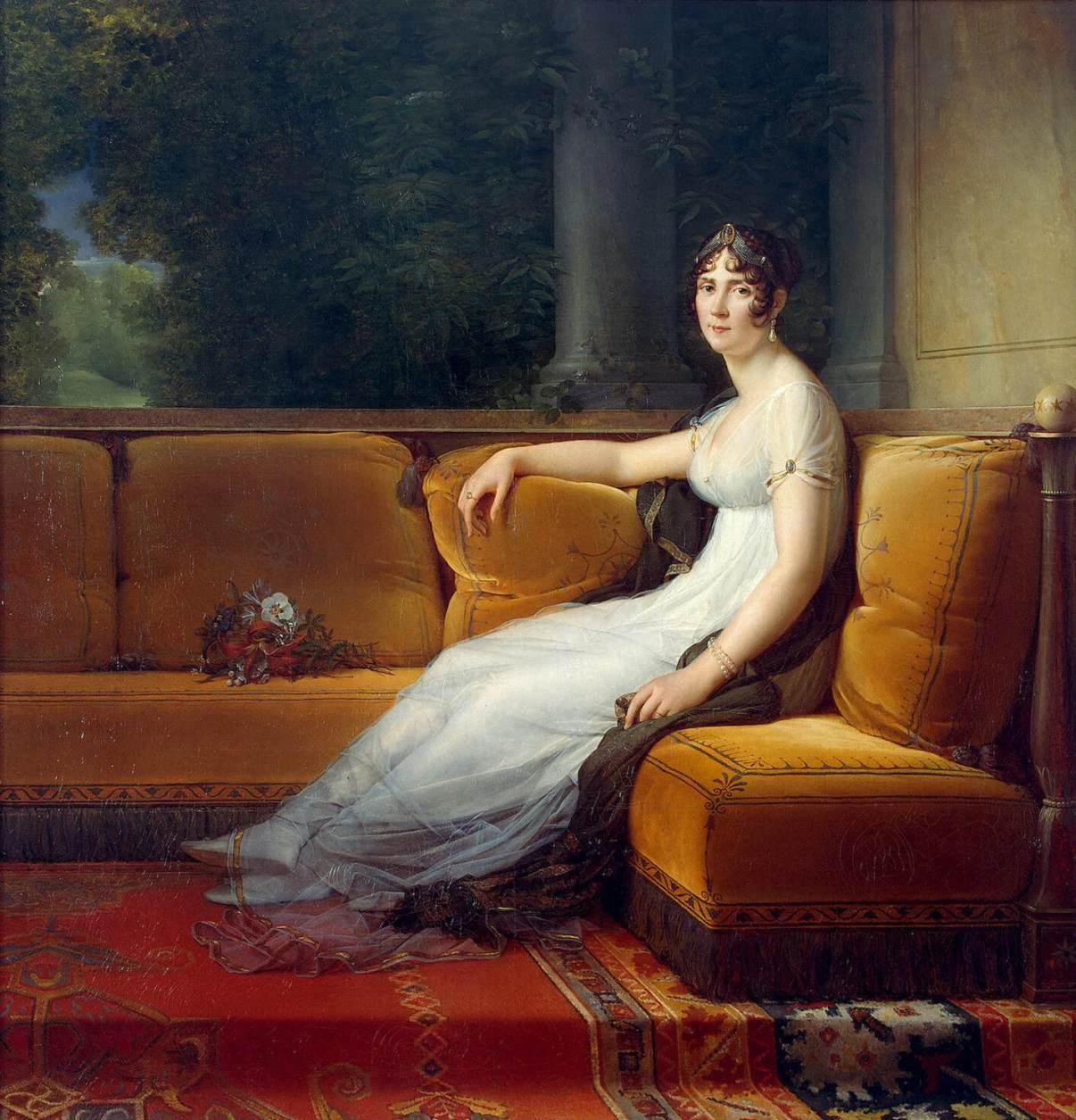
Empress Josephine in her salon at the Château de la Malmaison. Portrait chosen by Monsieur de France: By François Gérard - Web Gallery of Art: Image Info about artwork, Public domain, https://commons.wikimedia.org/w/index.php?curid=15495667
She had plants imported from the Americas, which she planted in the ground or in greenhouses. She even has a heated orangery where she can grow the fruit she's been missing since leaving the West Indies: pineapples, of which she now has almost 300 plants. She also has an impressive collection of nearly 250 different rosebushes. She was responsible for bringing the flowering Magnolia, her favourite tree, to France, as well as dalhias, camellias and phlox, which she grew for the first time in the country.
The flowering camellia was Empress Josephine's favourite tree. We owe its arrival in Metropolitan France to it. Photo chosen by monsieurdefrance.com: Aikilu via depositphotos
4 Hydrangea, the Breton flower
The hydrangea is a plant native to Asia (Japan, China...) and America. There's nothing French about the origins of this plant, but it has become emblematic of one region in particular: Brittany. Pink, white, blue... Hydrangeas are often found in Breton gardens, in front of old houses. Introduced in the 19th century, hydrangeas have made a name for themselves thanks to their ease of adaptation to the Breton climate. It has to be said that it is particularly fond of rain and sunshine, and hates very hot weather. Tip: it is said that to turn a white hydrangea blue, you need to put crushed slate at its feet. It's a good idea, as slate is common in Brittany and is used to cover roofs. There are many varieties, including climbing varieties.
The hydrangea in flower. A Breton delight in June. Photo chosen by Monsieur de France: Madrabothair via depositphotos
Bleuet de France
A wild blueberry. Photo chosen by Monsieur de France: sandrisvev@inbox.lv via depositphotos
Along with the poppy (which was chosen by the British), it was the only one to grow on land turned over by the war, and it has been the emblem of remembrance of French soldiers who died for France since 1920. It is customary for celebrities to wear one as a buttonhole during the 11 November and 8 May tribute ceremonies. The "Bleuet de France" charity, which, by selling cornflowers on days of remembrance, funds aid for the war-disabled, veterans, war widows and orphans. You can make a donation here.

